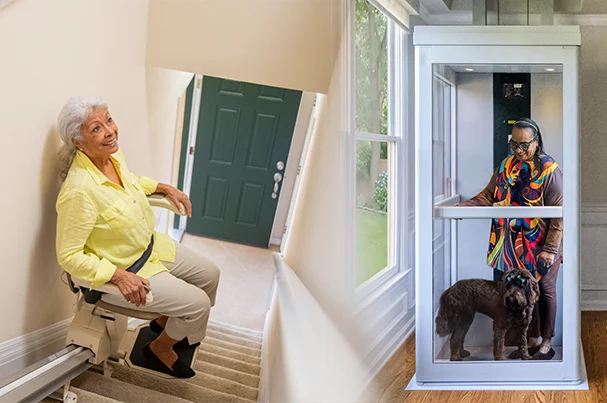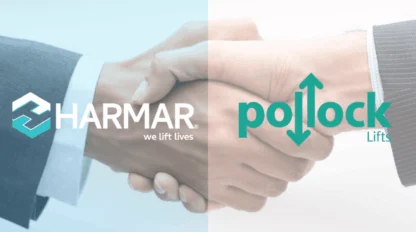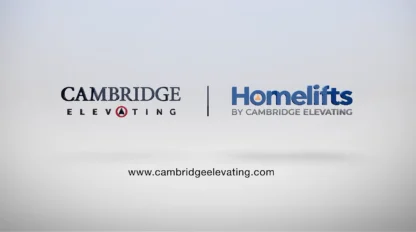Residential Elevators vs. Stairlifts: Which Mobility Solution is Best for You?
June 17, 2025
It can be difficult navigating the world of home access products – especially if you’ve never needed to even consider accessibility tools before. What’s a stairlift? Isn’t an elevator a little “extra”? We’re here to break down the difference between the two home access products and help you determine which would be a better fit for you or your loved one aging in place.

The Basics
Stairlifts are motorized chairs that travel along a rail mounted to the staircase. They’re generally used by those who struggle with using the stairs but do not heavily rely on mobility aids like scooters or walkers. They should have decent balance when standing and sitting to safely use the stairlift. Stairlifts can also come as straight stairlifts (with a straight rail) or curved stairlifts (with a curved rail fabricated to specifically fit the home’s curved stairway).
Residential elevators function like commercial elevators but are designed for home installation. They come in multiple styles; however, the shaftless (which is what the Pollock Residential Elevator is) elevator takes up the least amount of space and only requires two rails (installed beside a wall in the home), leaving ample amount of room in the home. They can accommodate people, wheelchairs, scooters, powerchairs, walkers, and are great to help transport laundry (because it’s annoying enough to fold).
Use Cases for Stairlifts
1. Straightforward Accessibility
Stairlifts are ideal for those who:
- Can walk short distances but struggle with stairs
- Have a narrow, straight, curved, or spiral staircase
- Seek a budget-friendly, minimally invasive solution
2. Fast Installation
Most stairlifts, if in stock, can be installed as soon as the dealer has availability and the installation takes anywhere from one hour to six (depending on the rail, complexity of the staircase, and length) with very minimal modifications to your home’s structure. They’re a great option for those interested in a quick, non-permanent solution.
3. Compact Design
Stairlifts fold when not in use and some can be combined with optional features like a folding rail, which eliminates any tripping hazards on the lower landing. The narrow folding and folding rail option help make the lift an optimal choice for those with smaller homes or limited clearance.
Use Cases for Residential Elevators
1. Multilevel Home Mobility
Elevators are best for:
- Wheelchair and powerchair users, mobility scooter users, those who are seeking long-term solutions to grow with their needs, or those with more severe mobility limitations
- Households that need to move more than just people like luggage, groceries, or medical equipment
2. Long-Term Investment
While more expensive upfront, residential elevators can add long-term value to your home. May realtors see elevators as a premium feature, especially in aging-friendly or luxury properties.
3. Custom Aesthetic and Comfort
Elevators, like the Pollock Elevator, offer a range of design options like wood finishes, glass panels, touchpad controls, in-cabin wireless phone, mood lighting, and more.
Both solutions have empowered thousands of those interested in again in place to live safely and independently in their homes. The best choice depends on your mobility needs, home layout, and long-term goals.
Interested in Becoming a Distributor?
If you are looking to expand your product offerings or trying to reach a new market, then the Pollock Residential Elevator could be perfect for you. Reach out to our team to learn more.


